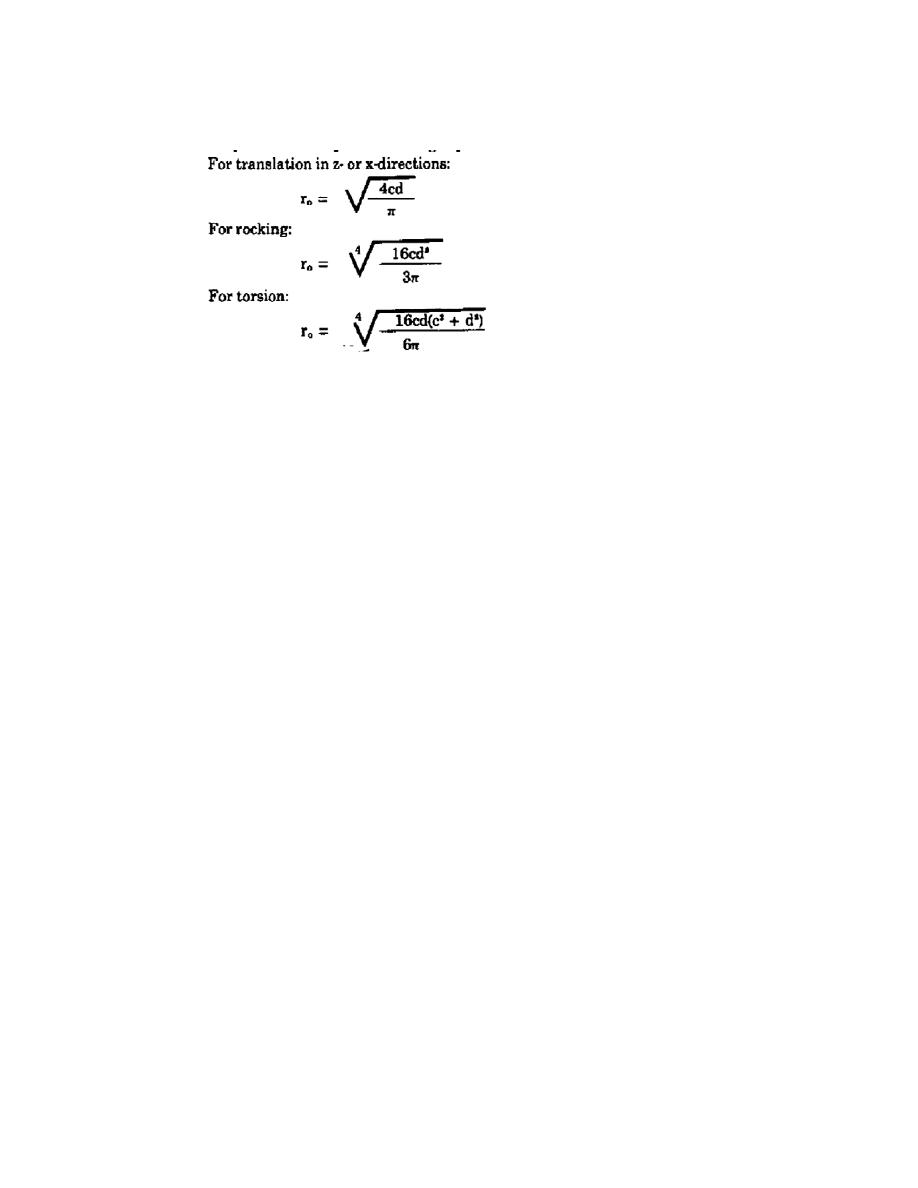
UFC 3-220-01N
15 AUGUST 2005
be converted into an equivalent circular footing having a radius, ro, determined by the
following expressions:
(12-10)
(12-11)
(12-12)
In equations (12-10), (12-11), and (12-12), 2c is the width of the rectangular foundation
(along the axis of rotation for rocking), and 2d is the length of the foundation (in the
plane of rotation for rocking). Two values of ro are obtained for rocking about both x and
y axes.
12-1.3.3
vertical motions (Example 1) and rocking motions (Example 2).
12-1.3.4
Effect of Embedment. Embedment of foundations a distance d below
the soil surface may modify the dynamic response, depending upon the soil-foundation
contact and the magnitude of d. If the soil shrinks away from the vertical faces of the
embedded foundation, no beneficial effects of embedment may occur. If the basic
evaluation of foundation response is based on a rigid circular footing (of radius ro) at the
surface, the effects of embedment will cause an increase in resonant frequency and a
decrease in amplitude of motion and the embedment ratio d/ro.
For vertical vibrations, both analytical and experimental results indicate an
increase in the static spring constant with an increase in the static spring constant with
an increase in embedment depth. Embedment of the circular footing a distance d/ro ≤
1.0 produces an increase in the embedded spring constant kxd which is grater than kz,
(table 12-1) by kzd/kz ≅ (1+0.6 d/ro). An increase in damping also occurs, e.g., Dzd/Dz ≅
(1+0.6 d/ro). These two approximate relations lead to an estimate of the reduction in
amplitude of motion because of embedment from Azd/Az = 1/Dzd/Dz x kzd/kz). This
amount of amplitude reduction requires complete soil adhesion at the vertical face, and
test data have often indicated less effect of embedment. Test data indicate that the
embedment.
The influence of embedment on coupled rocking and sliding vibrations
depends on the ratio Bψ/Bx (table12-1). For Bψ/Bx ~= 3.0, the increase in natural
frequency due to embedment may be as much as (1+0.5 d/ro). The decrease in
amplitude is strongly dependent upon the soil contact along the vertical face of the
foundation, and each case should be evaluated on the basis of local soil and
construction conditions.
12-7



 Previous Page
Previous Page
